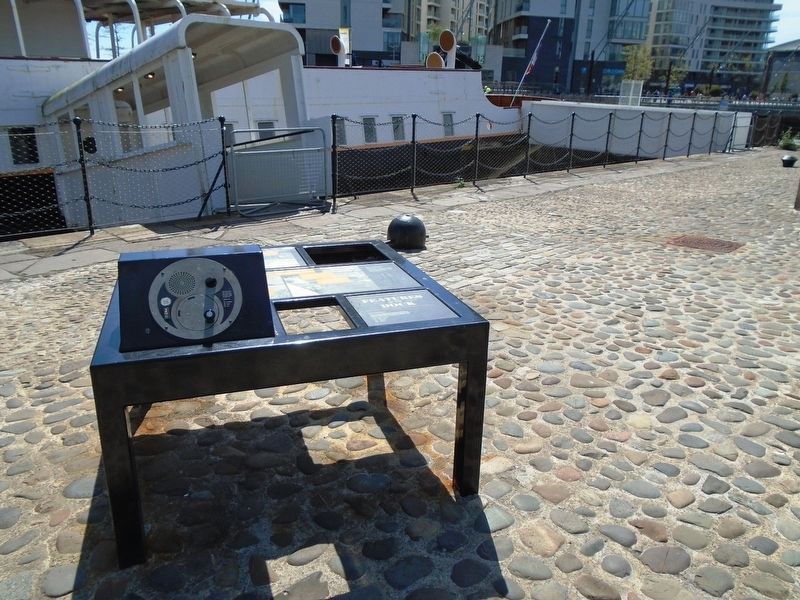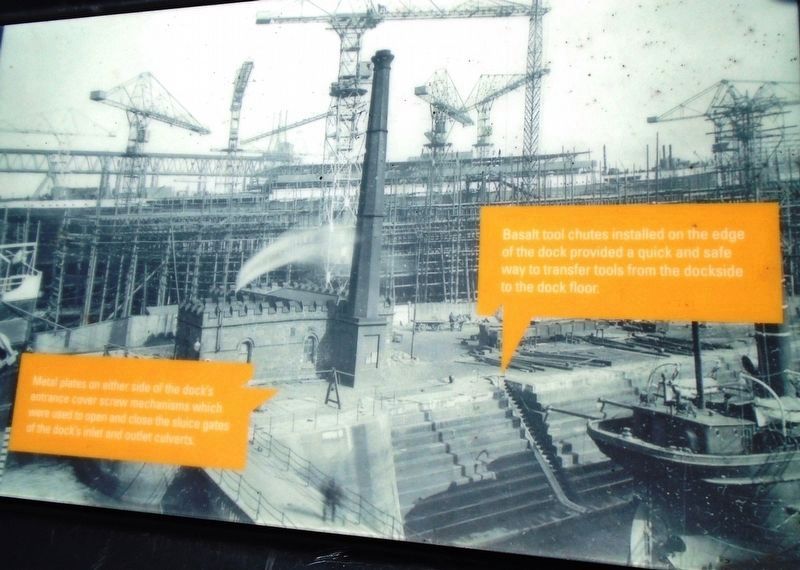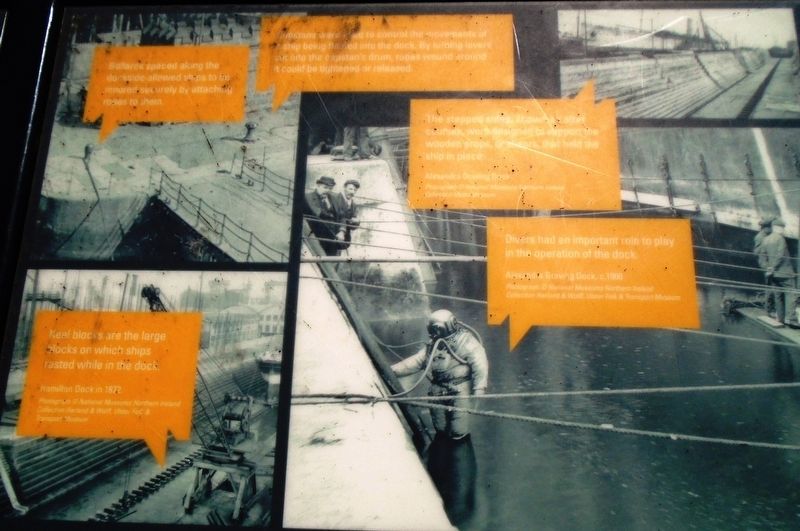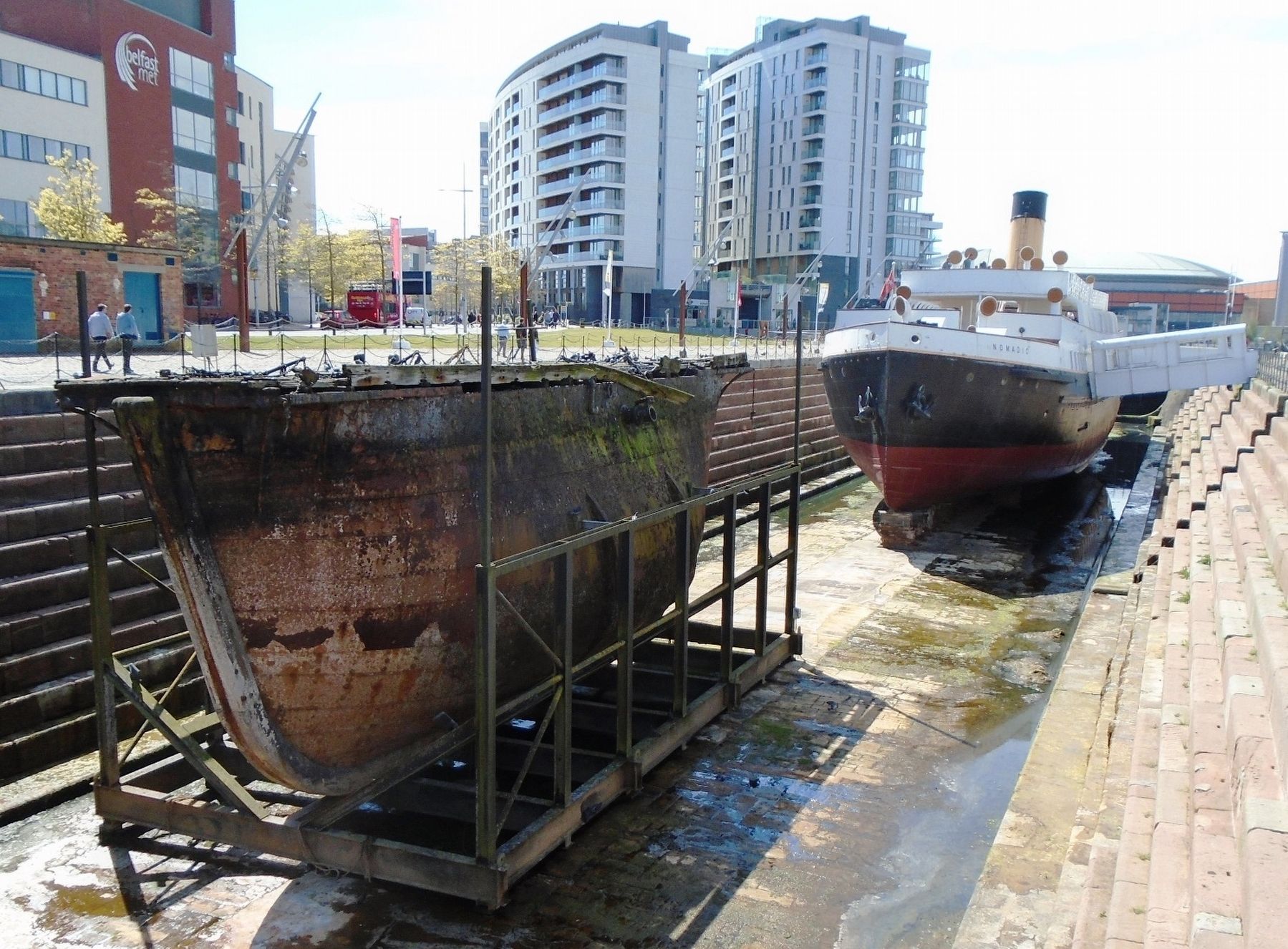Belfast, Northern Ireland, United Kingdom — Northwestern Europe (the British Isles)
Features of the Dock
Find out more about how Hamilton Graving
Dock worked. Select a channel and turn the
handle a few times to play each audio track.
1 Keel blocks
2 Caisson
3 Diver
Time spent by ships in the dock
was measured in tides rather than in days.
Typically, ships would spend a maximum of two weeks in the dock, being cleaned, re-painted, fitted with propellers or anchors, or repaired. Rental rates were high and ship-builders preferred to use the dry dock only when it was absolutely necessary.
[Photo caption reads]
Left Hamilton Dock, c.1902
[Yellow inset captions, left to right, read]
• Metal plates on either side of the dock's entrance cover screw mechanisms which were used to open and close the sluice gates of the dock's inlet and outlet culverts.
• Basalt tool chutes installed on the edge of the dock provided a quick and safe way to transfer tools from the dockside to the dock floor.
DEPTH INDICATORS
Arabic and Roman numerals are carved into the wall by the caisson to indicate the depth of the water. Can you spot something unusual about these numbers?
[Diagram showing numerals and mock water level]
[Multiple photo panel yellow inset captions, clockwise from top left, read]
• Bollards spaced along the dockside allowed ships to be moored securely by attaching ropes to them.
• Capstans were used to control the movements of a ship being floated into the dock. By turning levers [cut?] into the capstan's drum, ropes wound around it could be tightened or released.
• The stepped sides, known as altar courses, were designed to support the wooden props, or shears, that held the ship in place. Alexandra Graving Dock
• Divers had an important role to play in the operation of the dock. Alexandra Graving Dock, c.1900
• Keel blocks are the large blocks on which ships rested while in the dock. Hamilton Dock in 1872.
Topics. This historical marker is listed in this topic list: Waterways & Vessels. A significant historical year for this entry is 1902.
Location. 54° 36.387′ N, 5° 54.683′ W. Marker is in Belfast, Northern Ireland. Marker is on Queens Road, on the left when traveling north. Part of the Titanic Belfast complex. Touch for map. Marker is at or near this postal address: Hamilton Dock, Belfast, Northern Ireland BT3 9DT, United Kingdom. Touch for directions.
Other nearby markers. At least 8 other markers are within walking distance of this marker. Operating the [Hamilton] Dock (here, next to this marker); Nomadic in Hamilton Dock (here, next to this marker); Keel Blocks (here, next to this marker); Bigger Ships and Bigger Docks (a few steps from this marker); The Dockside: A Hive of Activity (a few steps from this marker); Hamilton Dock Stone Construction (a few steps from this marker); Hamilton Dock: Refurbishment and Restoration (a few steps from this marker); a different marker also named Hamilton Dock Stone Construction (a few steps from this marker). Touch for a list and map of all markers in Belfast.
Also see . . . The Hamilton Graving Dock. (Submitted on June 13, 2019, by William Fischer, Jr. of Scranton, Pennsylvania.)
Credits. This page was last revised on September 7, 2022. It was originally submitted on June 13, 2019, by William Fischer, Jr. of Scranton, Pennsylvania. This page has been viewed 137 times since then and 14 times this year. Photos: 1, 2, 3, 4, 5. submitted on June 13, 2019, by William Fischer, Jr. of Scranton, Pennsylvania.




